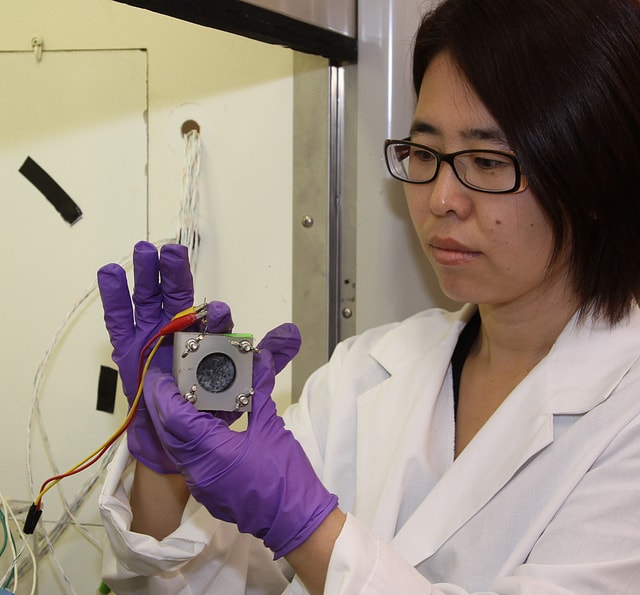Engineers at Oregon State University have made a breakthrough in the performance of microbial fuel cells that can produce electricity directly from wastewater, opening the door to a future in which waste treatment plants not only will power themselves, but will sell excess electricity.
The new technology developed at OSU can now produce 10 to 50 more times the electricity, per volume, than most other approaches using microbial fuel cells, and 100 times more electricity than some.
Researchers say this could eventually change the way that wastewater is treated all over the world, replacing the widely used “activated sludge” process that has been in use for almost a century. The new approach would produce significant amounts of electricity while effectively cleaning the wastewater.
The findings have just been published in Energy and Environmental Science, a professional journal, in work funded by the National Science Foundation.
“If this technology works on a commercial scale the way we believe it will, the treatment of wastewater could be a huge energy producer, not a huge energy cost,” said Hong Liu, an associate professor in the OSU Department of Biological and Ecological Engineering. “This could have an impact around the world, save a great deal of money, provide better water treatment and promote energy sustainability.”
Experts estimate that about 3 percent of the electrical energy consumed in the United States and other developed countries is used to treat wastewater, and a majority of that electricity is produced by fossil fuels that contribute to global warming.
But the biodegradable characteristics of wastewater, if tapped to their full potential, could theoretically provide many times the energy that is now being used to process them, with no additional greenhouse emissions.
>
